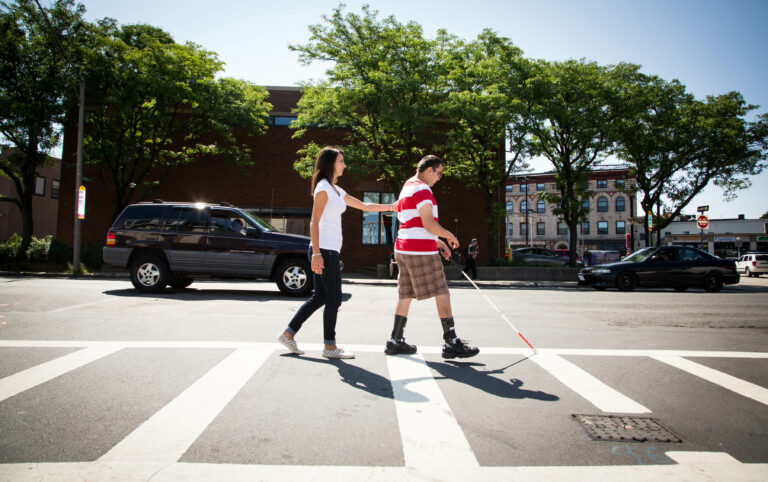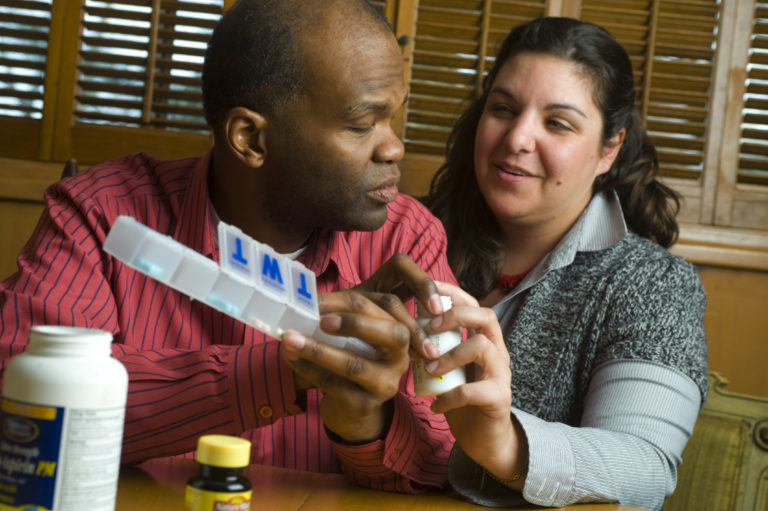FAQs
-
Are my vision changes normal?
-
Everyone’s vision changes with age. Some changes are normal in the aging eye, such as gradual difficulty seeing small print or distant street signs. Other changes are caused by eye diseases. An adult without a vision problem should get a comprehensive eye exam every two years whether or not he or she has any visual symptoms. Adults who wear glasses or contact lenses or have an eye disorder should have an exam annually. Anyone who experiences a sudden loss of vision or any of the symptoms below should immediately contact an eye doctor. Warning signs to watch out for:
- Sudden vision loss, in both or in one eye
- Flashing lights, floaters, or a gray shadow in your vision
- Eye pain
- Persistent discomfort in the eye
- Red eye
- Blurred vision
- Eye surgery complication
-
-
-
- Should I get an eye exam?
-
- Anyone who begins to experience challenges with their vision, whether on the computer, reading a book or seeing street signs as they’re driving, should go in for an eye exam. An adult without a vision problem should get a comprehensive eye exam every two years whether or not he or she has any visual symptoms. Adults who wear glasses or contact lenses or have an eye disorder should have an exam annually.
-
What are common eye diseases?
- Common eye diseases that cause vision loss include age-related macular degeneration, cataracts, diabetic retinopathy, glaucoma, and retinitis pigmentosa. Learn more about eye diseases, with simulations.
-
What is a low vision eye exam?
- The low vision exam is a highly specialized eye exam to determine the scope and extent of vision loss. Eye charts and tools are specifically developed to determine if the client can benefit from optical devices. Learn more about low vision exams.
-
What is Legal Blindness?
- Legal blindness occurs when a person has central visual acuity (vision that allows a person to see straight ahead of them) of 20/200 or less in his or her better eye with correction. With 20/200 visual acuity, a person can see at 20 feet, what a person with 20/20 vision sees at 200 feet.“Low vision” is uncorrectable vision loss that interferes with daily activities.
-
Who’s Who in Eye Care?
- Three types of eye care providers:Ophthalmologist
An ophthalmologist — Eye M.D. — is a medical or osteopathic doctor who specializes in eye and vision care. Ophthalmologists differ from optometrists and opticians in their levels of training and in what they can diagnose and treat. As a medical doctor who has completed college and at least eight years of additional medical training, an ophthalmologist is licensed to practice medicine and surgery. An ophthalmologist diagnoses and treats all eye diseases, performs eye surgery and prescribes and fits eyeglasses and contact lenses to correct vision problems. Many ophthalmologists are also involved in scientific research on the causes and cures for eye diseases and vision disorders.SUBSPECIALISTS: ADDITIONAL KNOWLEDGE AND TRAINING FOR SPECIFIC EYE NEEDS
While ophthalmologists are trained to care for all eye problems and conditions, some Eye M.D.s specialize in a specific area of medical or surgical eye care. This person is called a subspecialist. He or she usually completes one or two years of additional, more in-depth training called a fellowship in one of the main subspecialty areas such as glaucoma, retina, cornea, pediatrics, neurology and plastic surgery, as well as others. This added training and knowledge prepares an ophthalmologist take care of more complex or specific conditions in certain areas of the eye or in certain groups of patients.Optometrist
Optometrists are healthcare professionals who provide primary vision care ranging from sight testing and correction to the diagnosis, treatment, and management of vision changes. An optometrist is not a medical doctor. An optometrist receives a doctor of optometry (OD) degree after completing four years of optometry school, preceded by three years or more years of college. They are licensed to practice optometry, which primarily involves performing eye exams and vision tests, prescribing and dispensing corrective lenses, detecting certain eye abnormalities, and prescribing medications for certain eye diseases.Optician
Opticians are technicians trained to design, verify and fit eyeglass lenses and frames, contact lenses, and other devices to correct eyesight. They use prescriptions supplied by ophthalmologists, who are medical doctors and surgeons or optometrists, but do not test vision or write prescriptions for visual correction. Opticians are not permitted to diagnose or treat eye diseases.Courtesy of American Association for Pediatric Ophthalmology
- Three types of eye care providers:Ophthalmologist
Services we provide
-
Orientation and Mobility
Training for caregivers and individuals on safe, effective travel in the community and at home.

-
Support Groups
The best support and advice is offered by people who really know what you’re going through – people who’ve had parallel experiences. Peers with shared experiences may even be able to anticipate your questions. While adjusting to vision loss, and even after you’ve grown accustomed to the change, a peer support group is a big help

-
Rehabilitation
MABVI’s in-home vision rehabilitation service is provided by licensed occupational therapists. This service focuses on improving household safety, healthcare management, and adaptive strategies for doing the things you want to do in life.

